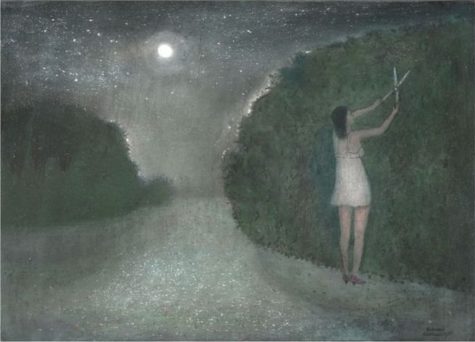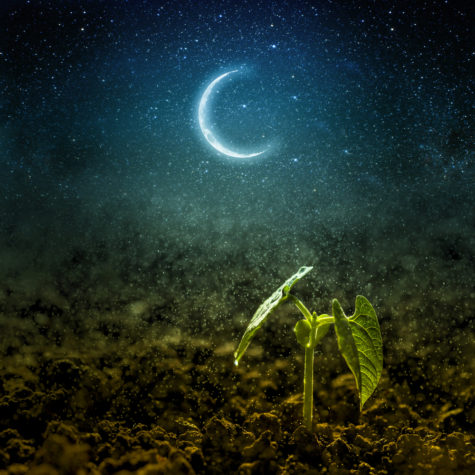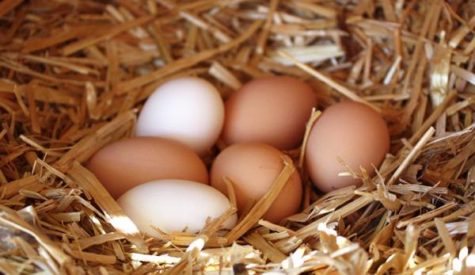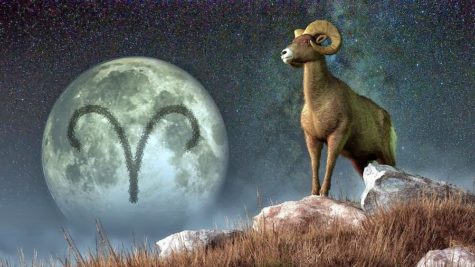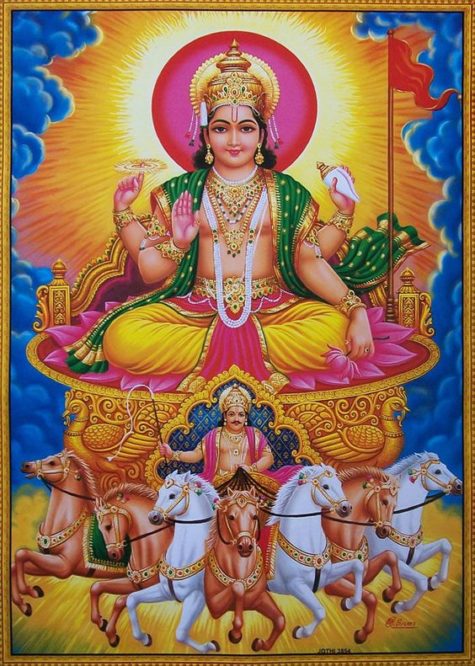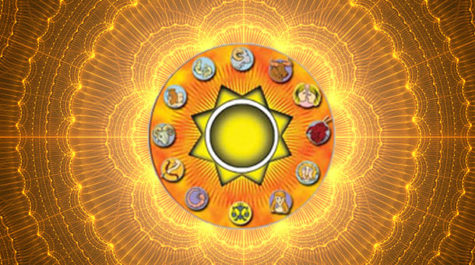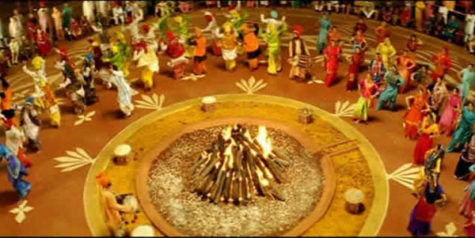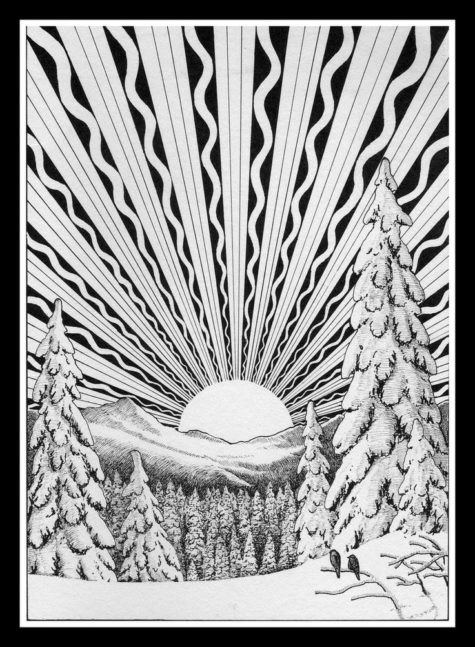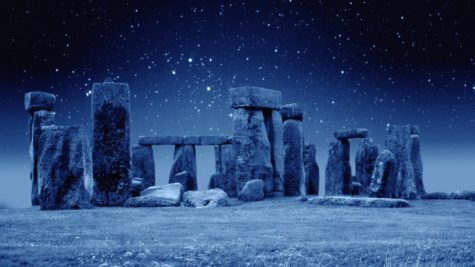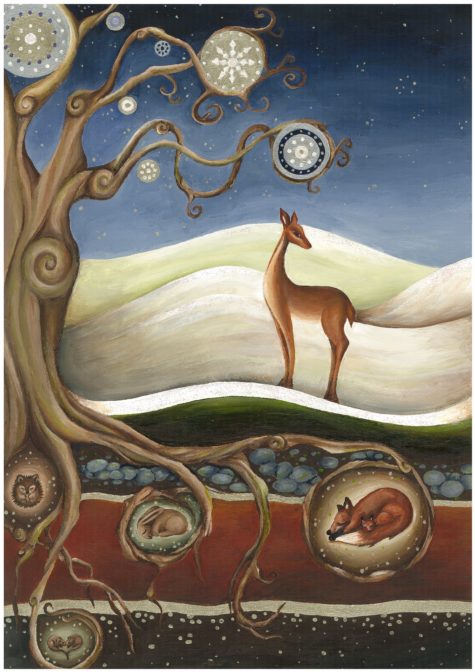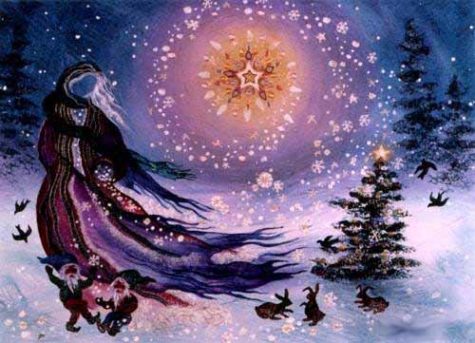Almanac Events
The best days listed here are based on both the phase of the moon and its position in the zodiac. Many people believe that if you do the tasks on the dates listed, you will get the best results possible.
January
- Demolition: 2, 3, 21, 29, 30
- Paint: 7, 8, 14, 15, 20, 21
- Wash Windows:2, 3, 29, 30
- Wash Wooden Floors: 2, 3, 21, 29, 30
- Wax Floors: 5, 6, 9 – 11, 14, 15, 18, 19
February
- Demolition: 25 – 27
- Paint: 3, 4, 10 – 12, 17, 18
- Wash Windows: 25 – 27
- Wash Wooden Floors: 3, 25 – 27
- Wax Floors: 5 – 7, 10 – 12, 15, 16
March
- Demolition: 25, 26
- Paint: 2– 4, 10, 11, 16, 17, 29 – 31
- Wash Windows: 25, 26
- Wash Wooden Floors: 2 – 4, 25, 26, 29 – 31
- Wax Floors: 6, 10, 11, 14, 15, 18, 19
April
- Demolition: 3, 4, 21, 22
- Paint: 6, 7, 13, 14, 26, 27
- Wash Windows: 21, 22
- Wash Wooden Floors: 3, 4, 21, 22, 26, 27
- Wax Floors: 6, 10, 11, 14, 15, 18, 19
May
- Demolition: 1, 2, 18 – 20, 28 – 30
- Paint: 3, 4, 10, 11, 23 – 25, 31
- Wash Windows: 18 – 20
- Wash Wooden Floors: 1, 2, 18 – 20, 23 – 25, 28 – 30
- Wax Floors: 4, 8, 9, 12 – 17
June
- Demolition: 24 – 26
- Paint: 1, 6, 7, 19 – 21, 27, 28
- Wash Windows: 15, 16
- Wash Wooden Floors: 2, 19 – 21, 24 – 26, 29, 30
- Wax Floors: 4, 5, 8 – 14
July
- Demolition: 22, 23
- Paint: 3 – 5, 17, 18, 24 – 26, 31
- Wash Windows: 12, 13
- Wash Wooden Floors: 17, 18, 22, 23, 27, 28
- Wax Floors: 2, 6 – 11, 14, 15
August
- Demolition: 18 – 20, 27, 28
- Paint: 1, 13, 14, 21, 22, 27, 28
- Wash Windows: 8 – 10
- Wash Wooden Floors: 18 – 20, 23, 24, 27, 28
- Wax Floors: 2 – 7, 11, 12, 30, 31
September
- Demolition: 14 – 16, 24, 25
- Paint: 9 – 11, 17, 18, 24, 25
- Wash Windows: 4 – 6
- Wash Wooden Floors: 14 – 16, 19 – 21, 24, 25
- Wax Floors: 1 – 3, 7, 8, 12, 13, 28 – 30
October
- Demolition: 13, 21, 22
- Paint: 6 – 8, 14, 15, 21, 22
- Wash Windows: 2, 3, 29, 30
- Wash Wooden Floors: 13, 16 – 18, 21, 22
- Wax Floors: 1, 4, 5, 9 – 11, 27, 28, 31
November
- Demolition: 17, 18
- Paint: 3, 4, 10 – 12, 17, 18, 30
- Wash Windows: 26, 27
- Wash Wooden Floors: 13, 14, 17, 18
- Wax Floors: 1, 2, 5 – 7, 10, 11, 28, 29
December
- Demolition: 14 – 16, 23, 24
- Paint: 1, 2, 8, 9, 14 – 16, 28, 29
- Wash Windows: 23, 24
- Wash Wooden Floors: 14 – 16, 23, 24
- Wax Floors: 3, 4, 8, 9, 26, 27, 30, 31
Source: The Farmer’s Almanac
The best days listed here are based on both the phase of the moon and its position in the zodiac. Many people believe that if you do the tasks on the dates listed, you will get the best results possible.
January
- Cut Hair to Increase Growth: 5, 6, 9 – 11, 14, 15, 18, 19
- Cut Hair to Slow Growth: 2, 3, 21, 24 – 26, 29, 30
- Quit Smoking: 2, 3, 21 – 23, 29, 30
- Start Diet to Gain Weight: 9 – 11, 18, 19
- Start Diet to Lose Weight: 2, 3, 21 – 23, 29, 30
February
- Cut Hair to Increase Growth: 5 – 7, 10 – 12, 15, 16
- Cut Hair to Slow Growth: 3, 21, 22, 25 – 27
- Quit Smoking: 3, 19, 20, 25 – 27
- Start Diet to Gain Weight: 5 – 7, 15, 16
- Start Diet to Lose Weight: 3, 19, 20, 25 – 27
March
- Cut Hair to Increase Growth: 6, 10, 11, 14, 15
- Cut Hair to Slow Growth: 2 – 4, 20, 21, 25, 26, 29 – 31
- Quit Smoking: 2 – 4, 25, 26, 29 – 31
- Start Diet to Gain Weight: 6, 14, 15
- Start Diet to Lose Weight: 2 – 4, 25, 26, 29 – 31
April
- Cut Hair to Increase Growth: 6, 7, 10 – 12
- Cut Hair to Slow Growth: 3, 4, 21, 22, 26, 27
- Quit Smoking: 3, 4, 21, 22, 26, 27
- Start Diet to Gain Weight: 10 – 12
- Start Diet to Lose Weight:3, 4, 21, 22, 26, 27
May
- Cut Hair to Increase Growth: 4, 8, 9, 16, 17
- Cut Hair to Slow Growth: 1, 2, 18 – 20, 23 – 25, 28 – 30
- Quit Smoking: 1, 2, 18 – 20, 23 – 25, 28 – 30
- Start Diet to Gain Weight: 8, 9
- Start Diet to Lose Weight: 1, 2, 18 – 20, 23 – 25, 28 – 30
June
- Cut Hair to Increase Growth: 4, 5, 13, 14
- Cut Hair to Slow Growth: 2, 19 – 21, 24 – 26, 29, 30
- Quit Smoking: 2, 19 – 21, 24 – 26, 29, 30
- Start Diet to Gain Weight: 4, 5
- Start Diet to Lose Weight: 19 – 21, 24 – 26
July
- Cut Hair to Increase Growth: 2, 10, 11, 14, 15
- Cut Hair to Slow Growth: 17, 18, 22, 23, 27, 28
- Quit Smoking: 17, 18, 22, 23, 27, 28
- Start Diet to Gain Weight: 2
- Start Diet to Lose Weight: 17, 18, 22, 23
August
- Cut Hair to Increase Growth: 6, 7, 11, 12
- Cut Hair to Slow Growth: 18 – 20, 23, 24, 27, 28
- Quit Smoking: 18 – 20, 23, 24, 27 – 29
- Start Diet to Gain Weight: No good days
- Start Diet to Lose Weight: 18 – 20, 27 – 29
September
- Cut Hair to Increase Growth: 2, 3, 7, 8, 12, 13, 30
- Cut Hair to Slow Growth: 14 – 16, 19 – 21, 24, 25
- Quit Smoking: 14 – 16, 19 – 21, 24 – 27
- Start Diet to Gain Weight: 12, 13
- Start Diet to Lose Weight: 14 – 16, 24 – 27
October
- Cut Hair to Increase Growth: 1, 4, 5, 9 – 11, 27, 28, 31
- Cut Hair to Slow Growth: 13, 16 – 18, 21, 22, 25, 26
- Quit Smoking: 13, 16 – 18, 21 – 24
- Start Diet to Gain Weight: 9 – 11
- Start Diet to Lose Weight: 13, 21 – 24
November
- Cut Hair to Increase Growth: 1, 2, 5 – 7, 10, 11, 28, 29
- Cut Hair to Slow Growth: 13, 14, 17, 18, 21 – 23
- Quit Smoking: 13, 14, 17 – 20
- Start Diet to Gain Weight: 5 – 7
- Start Diet to Lose Weight: 17 – 20
December
- Cut Hair to Increase Growth: 3, 4, 8, 9, 26, 27, 30, 31
- Cut Hair to Slow Growth: 14 – 16, 19, 20, 23, 24
- Quit Smoking: 14 – 18, 23, 24
- Start Diet to Gain Weight: 3, 4, 30, 31
- Start Diet to Lose Weight: 14 – 18, 23, 24
Source: The Farmer’s Almanac
The best days listed here are based on both the phase of the moon and its position in the zodiac. Many people believe that if you do the tasks on the dates listed, you will get the best results possible.
January
- Bake: 5, 6, 12, 13, 18, 19
- Brew: No good days
- Can Fruits and Vegetables: 1, 27, 28
- Dry Fruits and Vegetables: 21
- Jams and Jellies: 1, 27, 28
February
- Bake: 8, 9, 15, 16
- Brew: No good days
- Can Fruits and Vegetables: 23, 24
- Dry Fruits and Vegetables: 25
- Jams and Jellies: 3, 23, 24
March
- Bake: 7 – 9, 14, 15
- Brew: 5
- Can Fruits and Vegetables: 5, 22 – 24
- Dry Fruits and Vegetables: 25, 26
- Jams and Jellies: 2 – 4, 22 – 24, 29 – 31
April
- Bake: 5, 10 – 12, 17, 18
- Brew: 1, 2, 28 – 30
- Can Fruits and Vegetables: 1, 2, 19, 20, 28 – 30
- Dry Fruits and Vegetables: 21, 22
- Jams and Jellies: 19, 20, 26, 27
May
- Bake: 8, 9, 14, 15
- Brew: 26, 27
- Can Fruits and Vegetables: 26, 27
- Dry Fruits and Vegetables: 18 – 20
- Jams and Jellies: 3, 23 – 25, 31
June
- Bake: 4, 5, 10 – 12
- Brew: 22, 23
- Can Fruits and Vegetables: 22, 23
- Dry Fruits and Vegetables: 24
- Jams and Jellies: 1, 19 – 21, 27, 28
July
- Bake: 2, 8, 9, 14, 15
- Brew: 1, 19 – 21, 29, 30
- Can Fruits and Vegetables: 1, 19 – 21, 29, 30
- Dry Fruits and Vegetables: 22, 23
- Jams and Jellies: 17, 18, 24 – 26
August
- Bake: 4, 5, 11, 12, 31
- Brew: 15 – 17, 25, 26
- Can Fruits and Vegetables: 15 – 17, 25, 26
- Dry Fruits and Vegetables: 18 – 20
- Jams and Jellies: 21, 22
September
- Bake: 1, 7, 8, 28, 29
- Brew: 22, 23
- Can Fruits and Vegetables: 22, 23
- Dry Fruits and Vegetables: 14 – 16
- Jams and Jellies: 17, 18
October
- Bake: 4, 5, 12, 31
- Brew: 19, 20
- Can Fruits and Vegetables: 19, 20
- Dry Fruits and Vegetables: 13
- Jams and Jellies: 14, 15
November
- Bake: 1, 2, 8, 9, 28, 29
- Brew: 15, 16
- Can Fruits and Vegetables: 15, 16, 24, 25
- Dry Fruits and Vegetables: 17, 18
- Jams and Jellies: 12, 24, 25
December
- Bake: 5 – 7, 26, 27
- Brew: 12, 13
- Can Fruits and Vegetables: 12, 13, 21, 22
- Dry Fruits and Vegetables: 14 – 16
- Jams and Jellies: 21, 22
Source: The Farmer’s Almanac
Moon phase gardening is an idea as old as agriculture, popular in folklore and superstition. Planting by the phases of the moon maintains a rhythm with the alternating gravitational pull of the moon. (Read more at Gardening By The Moon). The best days for gardening by the moon in 2019 are as follows:
January
- Plant above ground crops: 5, 6, 9 – 11, 14, 15, 18, 19
- Plant root crops: 1, 4, 24 – 28, 31
- Transplant: 1, 27, 28
- Plant seed beds: 1, 18, 19, 27, 28
- Plant flowers: 18, 19, 24 – 26
- Kill plant pests: 2, 3, 7, 8, 12, 13, 16, 17, 20 – 23, 29, 30
- Harvest: 2, 3, 29, 30
- Pick Apples and Pears: 2, 3, 21, 29, 30
- Prune Trees: 1, 4, 27, 28, 31
February
- Plant above ground crops: 5 – 7, 10 – 12, 15, 16
- Plant root crops: 1, 2, 21 – 24, 28
- Transplant: 23, 24
- Plant seed beds: 15, 16, 23, 24
- Plant flowers: 15, 16, 21, 22
- Kill plant pests: 3, 4, 8, 9, 13, 14, 17 – 20, 25 – 27
- Harvest: 3, 26, 27
- Pick Apples and Pears: 25 – 27
- Prune Trees: 1, 2, 23, 24, 28
March
- Plant above ground crops: 6, 10, 11, 14, 15
- Plant root crops: 1, 5, 20 – 24, 27, 28
- Transplant: 5, 22 – 24
- Plant seed beds: 14, 15, 22 – 24
- Plant flowers: 14, 15, 20, 21
- Kill plant pests: 2 – 4, 7 – 9, 12, 13, 16 – 19, 25, 26, 29 – 31
- Harvest: 2 – 4, 29 – 31
- Pick Apples and Pears: 25 – 26
- Prune Trees: 1, 22 – 24, 27, 28
April
- Plant above ground crops: 6, 7, 10 – 12, 17, 18
- Plant root crops: 1, 2, 19, 20, 23 – 25, 28 – 30
- Transplant: 1, 2, 19, 20, 28 – 30
- Plant seed beds: 10 – 12, 19, 20
- Plant flowers: 10 – 12, 17, 18
- Kill plant pests: 3 – 5, 8, 9, 13 – 16, 21, 22, 26, 27
- Harvest: 3, 4, 26, 27
- Pick Apples and Pears: 3, 4, 21, 22
- Prune Trees: 19, 20, 23 – 25
May
- Plant above ground crops: 4, 8, 9, 14 – 17
- Plant root crops: 3, 21, 22, 26, 27, 31
- Transplant: 3, 26, 27, 31
- Plant seed beds: 8, 9, 16, 17
- Plant flowers: 8, 9, 14, 15
- Kill plant pests: 1, 2, 5 – 7, 10 – 13, 18 – 20, 23 – 25, 28 – 30
- Harvest: 1, 2, 28 – 30
- Pick Apples and Pears: 1, 2, 18 – 20, 28 – 30
- Prune Trees: 21, 22
June
- Plant above ground crops: 4, 5, 10 – 14
- Plant root crops: 1, 17, 18, 22, 23, 27, 28
- Transplant: 1, 22, 23, 27, 28
- Plant seed beds: 4, 5, 13, 14
- Plant flowers: 4, 5, 10 – 12
- Kill plant pests: 2, 3, 6 – 9, 15, 16, 19 – 21, 24 – 26, 29, 30
- Harvest: 2, 25, 26, 29, 30
- Pick Apples and Pears: 24 – 26
- Prune Trees: 17, 18
July
- Plant above ground crops: 2, 8 – 11, 14, 15
- Plant root crops: 1, 16, 19 – 21, 24 – 26, 29
- Transplant: 1, 19 – 21, 24 – 26, 29, 30
- Plant seed beds: 1, 2, 10, 11, 29, 30
- Plant flowers: 1, 2, 10, 11, 29, 30
- Kill plant pests: 3 – 7, 12, 13, 17, 18, 22, 23, 27, 28, 31
- Harvest: 27, 28
- Pick Apples and Pears: 22, 23
- Prune Trees: 16
August
- Plant above ground crops: 4 – 7, 11, 12, 31
- Plant root crops: 30
- Transplant: 15 – 17, 21, 22, 25, 26
- Plant seed beds: 6, 7, 25, 26
- Plant flowers: 4, 5, 25, 26, 31
- Kill plant pests: 1 – 3, 8 – 10, 13, 14, 18 – 20, 23, 24, 27 – 30
- Harvest: 23, 24, 27 – 29
- Pick Apples and Pears: 18 – 20, 27, 28
- Prune Trees: No good days
September
- Plant above ground crops: 1 – 3, 7, 8, 12, 13, 28 – 30
- Plant root crops: 15 – 17, 21, 22, 25, 26
- Transplant: 17, 18, 22, 23
- Plant seed beds: 2, 3, 22, 23, 30
- Plant flowers: 1, 22, 23, 28, 29
- Kill plant pests: 4 – 6, 9 – 11, 14 – 16, 19 – 21, 24 – 27
- Harvest: 21, 24 – 27
- Pick Apples and Pears: 14 – 16, 24, 25
- Prune Trees: No good days
October
- Plant above ground crops: 1, 4, 5, 9 – 11, 27, 28, 31
- Plant root crops: 17, 18, 22, 23
- Transplant: 14, 15, 19, 20
- Plant seed beds: 1, 19, 20, 27, 28
- Plant flowers: 19, 20, 25, 26
- Kill plant pests: 2, 3, 6 – 8, 12, 13, 16 – 18, 21 – 24, 29, 30
- Harvest: 21 – 24
- Pick Apples and Pears: 13, 21, 22
- Prune Trees: No good days
November
- Plant above ground crops: 1, 2, 5 – 7, 10, 11, 28, 29
- Plant root crops: 14, 15, 19, 20, 25, 26
- Transplant: 12, 15, 16, 24, 25
- Plant seed beds: 15, 16, 24, 25
- Plant flowers: 15, 16, 21 – 23
- Kill plant pests: 3, 4, 8, 9, 13, 14, 17 – 20, 26, 27, 30
- Harvest: 19, 20
- Pick Apples and Pears: 17, 18
- Prune Trees: 24, 25
December
- Plant above ground crops: 3, 4, 8, 9, 26, 27, 30, 31
- Plant root crops: 12, 15, 16, 21 – 25
- Transplant: 12,13, 21, 22
- Plant seed beds: 12,13, 21, 22
- Plant flowers: 12,13, 19, 22
- Kill plant pests: 1, 2, 5 – 7, 10, 11, 14 – 18, 23, 24, 28, 29
- Harvest: 18, 23, 24
- Pick Apples and Pears: 14 – 16, 23, 24
- Prune Trees: 21, 22, 25
Source: Farmer’s Almanac
Moon phase gardening is an idea as old as agriculture, popular in folklore and superstition, but there are scientific ideas to back it up.
The Earth is in a large gravitational field, influenced by both the sun and moon. The tides are highest at the time of the new and the full moon, when sun and moon are lined up with earth. Just as the moon pulls the tides in the oceans, it also pulls upon the subtle bodies of water, causing moisture to rise in the earth, which encourages growth.
The highest amount of moisture is in the soil at this time, and tests have proven that seeds will absorb the most water at the time of the full moon. Planting by the phases of the moon will keep in rhythm with the alternating gravitational pull.
Moon phase gardening considers four phases or quarters lasting about seven days each. The first two quarters are during the waxing or increasing light, from the new moon and growing up to the full moon.
New Moon
At the new moon, the lunar gravity pulls water up, and causes the seeds to swell and burst. This factor, coupled with the increasing moonlight creates balanced root and leaf growth.
The first quarter is the best time for planting above ground bearing annual crops that produce their seeds outside the fruit. Examples are lettuce, spinach, celery, broccoli, cabbage, cauliflower, and grain crops.
2nd Quarter Moon
In the second quarter the gravitational pull is less, but the moonlight is strong, creating healthy leaf growth. It is generally a good time for planting, especially two days before the full moon.
The types of crops that prefer the second quarter are annuals that produce above ground, but their seeds form inside the fruit, such as beans, melons, peas, peppers, squash, and tomatoes.
Plant just before the full moon to get the benefits of peak moisture.
Full Moon
The third and fourth quarters are after the full moon when the light is waning or decreasing, and the energy is drawing down.
The gravitation pull is high, creating more moisture in the soil, but the moonlight is decreasing, putting energy into the roots. This is a favorable time for planting root time for crops, such as beets and carrots.
It is also good for perennials, bulbs and transplanting because of the active root growth. Prune in Scorpio.
4th Quarter Moon
In the fourth quarter there is decreased gravitational pull and moonlight, and this is considered a resting period.
This is also the best time to cultivate, harvest, transplant, fertilize and prune. Mow lawns in the third or fourth quarter to retard growth. Use the water signs for deep watering of shrubs and trees.
Source: Gardening By The Moon
According to moon lore, for best results you should set eggs (place eggs under a hen or in an incubator) during specific phases of the moon. It occured to me that if these are good days to set eggs, they might also be good days for fertility magick.
Here are the optimum dates for 2019:
- January: 16 – 18, 26, 27
- February: 13, 14, 22, 23
- March: 21 – 23
- April: 18, 19, 26
- May: 15, 16, 24, 25
- June: 11, 12, 20, 21
- July: 10, 17, 18
- August: 13, 14, 23
- September: 10, 11, 19 – 21
- October: 7, 8, 16 – 18
- November: 5, 13, 14
- December: 10, 11
Source: The Farmers’ Almanac
It is important to remember that the Moon cycles through the signs of the zodiac every couple of days, and it’s important to check the time of day that it enters and leaves the sign, because that will vary depending on your geographical location. If in doubt, you can use this moon sign calculator.
Aries rules beginnings, starting new ventures, pioneering, conflict, energy, ego, self, for me and mine, warriors and soldiers and military in general, weapons, guns, knives, sharp things, things which cut, surgery, razzle-dazzle, impatience, sarcasm, quick results, making trouble, rescuing people in trouble, heroism, naiveté, restlessness, me-first attitude, courage, sticking up for yourself.
Projects begun when the moon is in Aries often begin with much enthusiasm, but tend not to last. This is a good time for inciting conflicts, high energy, me, mine, war, knives, weapons, guns, quick but not lasting results, fire, sharp things, metals, daring, sticking up for yourself, risk taking, independence and inciting accidents.
Magick ruled by Mars has the best outcome at this time. This would include spellwork for the following:
- Health and vitality
- Energy working
- Consecrating athames or swords
- Working on weapons
- Self-improvement
- Makeovers
- Conflict, Combat
- Battles, war, warriors and soldiers
- Cutting through the red-tape
- Spells for yourself
Aries is a fire sign who likes to be a winner in everything. The moon in Aries favors any competition, survival games, gambling adventures, travels. This is a good period to reach your potential, to take active steps towards your dream, to overcome competitors.
Aries is considered a barren sign, so it is better not to plant fruit crops during the days of his lunar reign. You can plant lawn grass, ivy, ornamental plants. Despite the fact that it is a “barren” sign, astrologers claim that the moon in Aries helps couples to conceive a boy.
Note:
Do NOT have surgical procedures performed on the head or face at this time.
Moon Phase Info:
- New Moon in Aries – a tense period of conflict, do not make reckless decisions.
- Waxing Moon in Aries – time to show determination and perseverance! Even if you do not possess these qualities, today everything will work out!
- Full Moon in Aries – a day of danger and extreme entertainment. Choose an adventure in which insurance is provided.
- Waning Moon in Aries – a period of nostalgia, youthful enthusiasm and light.
Moon in Aries Obsidian Meditation
Select a variety of obsidian stones that intuitively draw your attention and is pleasing to your senses. The shape of the obsidian that you choose is also a matter of personal preference, but spheres and eggs seem to be the most popular meditation shapes. After cleansing and blessing your stone as well as the space where you will be practicing your meditation, you are ready to begin.
Begin your meditation by situating yourself in an upright position with feet booth flat on the floor. the room should be dimly lit, and quiet.
Once you are seated in a comfortable position, begin a rhythmic breathing sequence by inhaling deeply through the nose, holding the breath for three seconds and slowly exhaling from the mouth. As you inhale, visualize cleansing golden/white light vibrations entering your body through your nose, and traveling down your trachea and filling your lungs, chest cavity and heart center with warm, glowing sensations.
As you exhale, visualize discordant vibrations, tension, confusion, and stress leaving your body through your mouth in dark, cloudy swirls of energy. Bless yourself, and your discordant vibrations in the name of Spirit or any deity you deem fitting when you seek comfort, protection, and solace. Cast these discordant vibrations unto the ether to find peaceful resolution.
While sitting in silence welcome the energy of Aries and it’s rulers Mars and Mercury. Hold the intention of transmuting the Warrior energy within to the higher plane of mind. Take this time to breathe deeply, and focus your vision onto your stone. Choose to use the dynamic Aries electric fire to stimulate your intuition and to bring forward new ideas and ideals for the upliftment of humanity.
Begin to visualize golden/white light surrounding you and entering your nose, filling your chest, and heart center with warm loving sensations. As you exhale, visualize frustration, resentment, anxiety, and anger leaving your body in dark, cloudy swirls. Bless this discordant energy in the name of any higher or divine power you feel most comfortable with.
Pick up your obsidian in your left hand and begin to gaze upon it. Notice the depth of its color, the rich, dark, satiny luster of your black crystal. Now repeat: “Attune, Balance, Integrate, Ground” three times, then place the index of finger of your right hand upon your obsidian and began to stroke it gently. “Attune to the depths of obsidian. Attune to the depths of the black ray.”
After a time you might experience some warmth or tingling, especially along the spinal column, from your crown to your base chakra, down your legs and into your feet. This is the effect of your energy system attuning to the divine vibrations being amplified through your obsidian and should not cause alarm. Relax, breathe deep, and allow yourself to merge with and absorb the energies being transmitted by your obsidian crystal.
Visually fix the black color of obsidian at your base chakra, see your base chakra as a liquid pool of black obsidian, pulsating with the black light vibration that grounds you through your base chakra to the very consciousness of Earthly existence. If you’re using a colored obsidian, visualize the shimmering colors within your obsidian as swirling divine light vibrations above your head. Now allow those swirling divine lights to slowly travel the length of your crown chakra down into the liquid pool of obsidian at your base. Watch the shimmering colors mingle, integrating the etheric with the dynamics of Earthly survival modes.
Hold this visualization for up to 10 minutes. allow your obsidian to illuminate those aspects of yourself and your Earthly reality that you have been keeping hidden away from view. Allow the light of truth to illuminate the chambers where delusion, self-importance, and compulsions for material greed lie veiled by the ego- facilitated conditioned attitudes that may be keeping you from your highest potential. Allow your obsidian to assist you to clearly see the reality of your thought patterns as to how it pertains to your survival on Earth. Allow the light of truth to penetrate and illuminate the depths of darkness, and know that the light and darkness exist as one.
When you are ready to end the meditation, slowly count backwards from ten to one. at the count of one, open your eyes and breathe deeply several times. Remain seated until you feel fully integrated, and reflect upon your meditation experience. This is an excellent meditation for journal writing after.
Note:
While this meditation calls for the gemstone, Obsidian, I think you could substitute any gemstone that resonates with the energy of Aries, or the moon. The meditation would need a few minor adjustments to accommodate a different gemstone.
The Zodiac sign of Aries includes two stones: Bloodstone and Diamond. In addition to the Zodiac stones, Jasper is listed as the Planetary stone for Aries and Topaz as the Talismanic Stone. Gemstones appropriate for the moon would include Selenite, Moonstone, and Opal.
Sources:
Makar Sankranti (also known as Makara Sankranthi or Maghi) refers both to a specific solar day in the Hindu calendar and a Hindu festival in reference to deity Surya (sun) that is observed in January every year. It marks the first day of sun’s transit into the Makara (Capricorn), marking the end of the month with the winter solstice and the start of longer days.
- Significance: Festival of Harvest, welcome longer days, sun worship
- Celebrations: Kite flying, bonfires, fairs, surya puja in river, feast, arts, dance, socialization
Makar Sankranti is one of the few ancient Hindu festivals that has been observed according to solar cycles, while most festivals are set by the lunar cycle.
Being a festival that celebrates the solar cycle, it almost always falls on the same Gregorian date every year (January 14), except in rare years when the date shifts by a day for that year, because of the complexity of earth-sun relative movement.
Makar Sankranti is observed with social festivities such as colorful decorations, rural children going house to house, singing and asking for treats (or pocket money), fairs, dances, kite flying, bonfires and feasts.
The Magha Mela is mentioned in the Hindu epic, the Mahabharata, thus placing this festival to be around 2,000 years old.
Makar Sankranti is regarded as important for spiritual practices and many people take a holy dip in sacred rivers or lakes, especially Ganga, Yamuna, Godavari, Krishna and Cauvery. The bathing is believed to result in merit or absolution of past sins.
Every twelve years, the Hindus observe Makar Sankranti with one of the world’s largest mass pilgrimage, with an estimated 40 to 100 million people attending the event. At this event, they say a prayer to the sun and bathe at the Prayaga confluence of the River Ganga and River Yamuna at the Kumbh Mela.
Because the festival is dedicated to the Hindu sun god, Surya, people also pray to the sun and thank for their successes and prosperity. The traditional prayer to the sun is the Gayatri Mantra.
The Gayatri Mantra
The mantra is a hymn to the sun which represents both the physical sun and the Divine in all things. Here it is:
Om bhur bhuvah svah
tat savitur varenyam
bhargo devasya dhimahi
dhiyo yo nah prachodayat.
The eternal, earth, air, heaven
That glory, that resplendence of the sun
May we contemplate the brilliance of that light
May the sun inspire our minds.
Chanting the mantra serves three purposes.
- The first is to give back to the sun. The sun gives but never receives. The mantra is a gift back to the sun, an offering of gratitude to refuel the sun’s gracious offering.
- The second purpose is to seek wisdom and enlightenment. The mantra is a request to the sun: May we meditate upon your form and be illumined by who you are? (Consider that the sun offers its gift of illumination and energy to all beings, without judgment and without attachment to the outcome of the gift.)
- Finally, the mantra is an expression of gratitude, to both the life-giving sun and the Divine. The sensibility it evokes is more important than the literal meaning. It’s an offering, a way to open to grace, to inspire oneself to connect to the ancient vision of India.
An Auspicious Period
Makar Sankranti is regarded as the beginning of an auspicious phase or the holy phase of transition. It also marks the end of an inauspicious phase which begins around mid-December. Further it is also believed that any sacred ritual can be performed from this day onwards. The auspicious day of Makar Sankranti marks the beginning of warmer and longer days as compared to nights.
Makar Sankranti is all about forgetting bitter and sad moments which happened in the past and welcoming the new phase of life which is full of purity, knowledge and wisdom.
The Significance of Makar Sankranti
The significance of the Makar Sankranti festival is that it marks the day where there is a significant movement in the zodiac ~ the arrangement of the earth’s dial around the sun ~ and this movement brings about a new change in the way we experience the planet itself.
There are many sankrantis through the year; the two significant ones being Makar Sankranti, and right opposite, after summer solstice is Karka Sankranti. In between, there are many Sankrantis ~ every time the zodiac sign changes, it is called a Sankranti to suggest the movement of the planet, to understand that our life is sustained and nourished by this movement. If this movement ceases, everything about us will cease.
On the 22nd of December, the solstice happened, that means in relation to the sun, the movement or the tilt of the planet reaches its maximum. Now, from this day on, the northern movement is strong. Things really start changing upon the earth. From Makar Sankranti onwards, winter is being relieved step by step.
This movement is also a significant aspect in the way we reap from this planet. There was a time when human beings could eat only what the earth offered. Then we learned how to get what we wanted from the earth; this is called agriculture. When we were hunting and gathering, we only picked up what was there.
It is like when you were an infant, you ate or swallowed whatever your mother gave you. When you became a child, you asked for what you wanted. So we grew up a bit and started demanding and getting what we wanted, but still, you can only get what you want to a point that She is willing. If you stretch it beyond that, you will not only not get it, you will get something else. That is called industrialization.
Agriculture is coaxing the Mother to give what you want. Industrialization is ripping her apart. I am not speaking against something. I want you to understand the way our minds are transiting, the way human activity is transiting from one level to another.
So this is a day when we remind ourselves that everything that we are is what we take from this planet. I see everywhere in the world, people are talking about giving. I don’t know from where they give. You can only take ~ either you take gently or you grab. Did you come with your own property from somewhere? What is there to give? You can only take. Everything is offered. Take sensibly, that is all there is.
Some Thoughts About Movement
Makar Sankranti is celebrated as a very important festival in India. Sankranti literally means “movement.” Everything that we recognize as life is movement. Fortunately, people who came before us have moved on, and people who come after us are waiting for us to move on ~ don’t have any doubts about this.
The planet is moving and that is why it churns up life. If it were still, it wouldn’t be capable of life. So there is something called movement in which every creature is involved, but if there has to be movement, this movement has to be housed ~ this movement can only happen in the lap of stillness. One who does not touch the stillness of his life, one who does not touch the stillness of his being, one who does not know or has not tasted the stillness within and without, will invariably get lost in the movement.
Movement is pleasant only to a point. The planet earth is moving gently in such a beautiful manner ~ it is only changing seasons. Tomorrow, if it just speeds up, throttles up a little bit, then all our seemingly balanced minds will become imbalanced, everything will spin out of control. So movement is beautiful only to a certain point. Once it crosses that point, movement becomes torture.
So Makar Sankranti is a festival to recognize the movement, movement being celebration, movement being life, movement being the process of life and the beginning and the end of life. At the same time, the word ‘shankara’ is used to remind you that the one behind this, Shiva, is a still one; stillness is the basis of movement.
Though all the other planets are moving, the most important one is not moving. If the sun also takes a walk, then we are in trouble. He hangs there not moving. That is why everybody else’s movement is okay. But his stillness is relative because the whole solar system may be moving; the whole galaxy may be moving. So beyond that, the space which holds all this is absolute stillness.
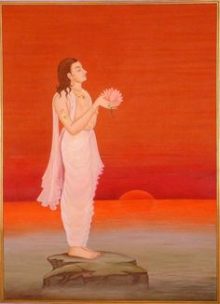 When a human being makes the necessary effort to touch the stillness within himself, only then he knows the joy of movement. Otherwise, people are bewildered by the movement of life. Every change that happens in their life they suffer.
When a human being makes the necessary effort to touch the stillness within himself, only then he knows the joy of movement. Otherwise, people are bewildered by the movement of life. Every change that happens in their life they suffer.
These days, the so-called modern life is like this ~ any change means you must suffer. Childhood is tension, puberty is great suffering, middle age is unbearable, old age is abhorred and feared, and death is celebration ~no that is pure terror.
Every stage of life is a problem because people have a problem with movement, not understanding that the very nature of life is movement. You can only enjoy and celebrate movement if you have one leg stuck in stillness. If you know what stillness is then movement would be a pleasure. If you do not know what stillness is, if you have no contact with stillness, movement is bewildering.
People are trying to track the movement. Looking at the stars, looking at lines in their hands and looking at all kinds of signs including the tea leaves. People want to read the movement of their lives somehow. This struggle with movement, this paranoia about movement, is happening because there is no taste of stillness.
If there was a taste of stillness in you, movement would not disturb you. It is something which sets a certain rhythm. Every rhythm has a beginning and an end; every movement has a beginning and an end. Movement means that which is in transition. Stillness means that which always is. Movement means compulsiveness, stillness means consciousness.
The significance of Makar Sankranti is that it is the time to remind yourself that celebrating movement is possible only when there is a taste of stillness within you.
Regional Celebrations
Because the festival is celebrated in winter, people start preparing food which can give them give them energy and also keep their body warm. Tilguls ~ Laddu of Til (Sesame) is made up of Jaggery and devotees also pay respect to Goddess Saraswati.
This type of sweet is a symbolism for being together in peace and joyfulness, despite the uniqueness and differences between individuals.
People greet each other Happy Sankranti by saying Tilgul Ghya Aani God God Bola.
For most parts of India, this period is a part of early stages of the Rabi crop and agricultural cycle, where crops have been sown and the hard work in the fields is mostly over. The time thus signifies a period of socializing and families enjoying each other’s company, taking care of the cattle, and celebrating around bonfires.
The Makar Sankranti festival is also known and referred to as the harvest festival because this is the time when harvesting is complete and there are big celebrations. This is the day we acknowledge all those who assisted in making the harvest. The farm animals play a huge role in harvesting, so the following day is for them and is called Mattu Pongal.
The first day is for the earth, the second is for us and the third is for the animals and livestock. See, they are placed a little higher than us because we exist because of them, they do not exist because of us. If we were not here, they would all be free and happy. But if they were not here, we couldn’t live.
These festivals are a reminder that we need to craft our present and our future in a conscious manner.
Also, on this day there are several Melas or fairs which are been held and one of the most famous among all melas is Kumbh Mela. It is been held every 12 years at one of four holy locations namely Haridwar, Prayag, Ujjain and Nashik.
The Magh Mela which is the mini mela is held annually at Prayag, the Gangasagar Mela held at the Ganges River, Tusu Mela in parts of Jharkhand and West Bengal and many more such fairs are been held on this auspicious day.
Regional Names
Known by different names and celebrated with different customs in different parts of the region, Makara or Makar Sankranti is an important pan-Indian solar festival observed on the same date, sometimes for multiple dates.
It is known as Pongal in Tamil Nadu, Pedda Panduga in Andhra Pradesh, Biku in Assam, Magha Mela in parts of central and north India, as Makar Sankranti in the west, and by other names. The festivities associated with Makar Sankranti are known by various names such as Lohri by north Indian Hindus and Sikhs, Sukarat in central India, Bhogali Bihu by Assamese Hindus, and Pongal by Tamil and other south Indian Hindus.
Wikipedia gives us this list:
- Suggi Habba, Makar Sankramana , Makara Sankranthi: Karnataka
- Makar Sankranthi: Andhra Pradesh, Telangana, Kerala
- Makar Sankranti: Chhattisgarh, Goa, Odisha, Bihar, Jharkhand, Madhya Pradesh, Maharashtra, Manipur, Rajasthan, Sikkim, Tripura, Uttar Pradesh, Uttarakhand, West Bengal and Jammu
- Thai Pongal, Uzhavar Thirunal: Tamil Nadu
- Uttarayan: Gujarat
- Maghi: Haryana, Himachal Pradesh and Punjab.
- Magh Bihu or Bhogali Bihu: Assam
- Shishur Saenkraat: Kashmir Valley
- Khichdi: Uttar Pradesh and western Bihar
- Poush Sangkranti: West Bengal
- Tila Sakrait: Mithila
In other countries too the day is celebrated by Hindus, but under different names and in different ways.
- Nepal: Maghe Sankranti or Maghi- /Khichdi Sankranti
- Bangladesh: Shakrain/ Poush Sangkranti
- Pakistan: (Sindh): Tirmoori
Sources:
This year (2018) is particularly unique in that January and March both contain two full moons while February has no full moon. This means that there are two Blue Moons. What is a Blue Moon?
IN MODERN times, the term “blue moon” is defined as the second full moon occurring within a single month. By a somewhat older definition, it’s the third full moon in a season that has four — instead of the normal three — full moons. Either way, it’s an out-of-the-ordinary phenomenon occurring only once every few years. Hence the phrase, “once in a blue moon.”
This is an especially magickal time, think of it as a lunar bonus round, a chance to ask for special “once in a blue moon” favors, or to work with “once in a lifetime” spells.
- Note:
The 2018 January Blue Moon is also a Supermoon, and a total Lunar Eclipse so this will be a prime time for magickal workings.
Why does this happen?
A full lunar cycle is a little over 28 days long. However, a calendar year is more than that, which means that during some years, you may end up with thirteen full moons instead of twelve, depending on where in the month the lunar cycle falls. This is because during each calendar year, you end up with twelve full 28-day cycles, and a leftover accumulation of eleven or twelve days. Those days accumulate, and so about once every 28 calendar months, you end up with an extra full moon during the month.
Historically, “blue moon” was understood in a more literal way. Once upon a time it denoted a phenomenon even rarer than an extra full moon, one that has occurred perhaps only once or twice in recorded history: the face of moon literally appearing to turn blue in color.
The Blue Moon will likely look no different than any other full Moon. But the Moon can change color in certain conditions.
After forest fires or volcanic eruptions, the Moon can appear to take on a bluish or even lavender hue. Soot and ash particles, deposited high in the Earth’s atmosphere can sometimes make the Moon appear bluish. Smoke from widespread forest fire activity in western Canada created a blue Moon across eastern North America in late September 1950. In the aftermath of the massive eruption of Mount Pinatubo in the Philippines in June 1991 there were reports of blue moons (and even blue Suns) worldwide.
Source: space.com
The winter solstice (or hibernal solstice), also known as midwinter, is an astronomical phenomenon marking the day with the shortest period of daylight and the longest night of the year. In the Northern Hemisphere this is the December solstice and in the Southern Hemisphere this is the June solstice.
The Winter Solstice has been celebrated for millennia by cultures and religions all over the world. Many modern pagan religions are descended in spirit from the ancient pre-Christian religions of Europe and the British Isles, and honor the divine as manifest in nature, the turning of the seasons, and the powerfully cyclical nature of life.
Worldwide, interpretation of the event has varied across cultures, but many have held a recognition of rebirth, involving holidays, festivals, gatherings, rituals or other celebrations around that time.
Most pagan religions are polytheistic, honoring both male and female deities, which are seen by some as two aspects of one non-gendered god, by others as two separate by complementing beings, and by others as entire pantheons of gods and goddesses.
It is common for the male god(s) to be represented in the sun, the stars, in summer grain, and in the wild animals and places of the earth. The stag is a powerful representation of the male god, who is often called “the horned god.”
The Goddess is most often represented in the earth as a planet, the moon, the oceans, and in the domestic animals and the cultivated areas of the earth.
In many pagan traditions the Winter Solstice symbolizes the rebirth of the sun god from his mother, the earth goddess. The Winter Solstice is only one of eight seasonal holidays celebrated by modern pagans.
Historical Notes
The solstice may have been a special moment of the annual cycle for some cultures even during neolithic times. Astronomical events were often used to guide activities such as the mating of animals, the sowing of crops and the monitoring of winter reserves of food.
Many cultural mythologies and traditions are derived from this. This is attested by physical remains in the layouts of late Neolithic and Bronze Age archaeological sites, such as Stonehenge in England and Newgrange in Ireland.
The primary axes of both of these monuments seem to have been carefully aligned on a sight-line pointing to the winter solstice sunrise (Newgrange) and the winter solstice sunset (Stonehenge). It is significant that at Stonehenge the Great Trilithon was oriented outwards from the middle of the monument, i.e. its smooth flat face was turned towards the midwinter Sun.
The winter solstice was immensely important because the people were economically dependent on monitoring the progress of the seasons. Starvation was common during the first months of the winter, January to April (northern hemisphere) or July to October (southern hemisphere), also known as “the famine months”.
In temperate climates, the midwinter festival was the last feast celebration, before deep winter began. Most cattle were slaughtered so they would not have to be fed during the winter, so it was almost the only time of year when a plentiful supply of fresh meat was available. The majority of wine and beer made during the year was finally fermented and ready for drinking at this time.
The concentration of the observances were not always on the day commencing at midnight or at dawn, but at the beginning of the pagan day, which in many cultures fell on the previous eve. Because the event was seen as the reversal of the Sun’s ebbing presence in the sky, concepts of the birth or rebirth of sun gods have been common and, in cultures which used cyclic calendars based on the winter solstice, the “year as reborn” was celebrated with reference to life-death-rebirth deities or “new beginnings” such as Hogmanay’s redding, a New Year cleaning tradition. Also “reversal” is yet another frequent theme, as in Saturnalia’s slave and master reversals.
A Winter Solstice reading:
This is the night of the Solstice, the longest night of the year. Now darkness triumphs, yet gives way and changes into light. The breath of Nature is suspended: all waits while within the Cauldron, the Dark King is transformed into the infant light. We watch for the coming of Dawn, when the great Mother again gives birth to the Divine child Sun, who is bringer of hope and the promise of summer. This is the stillness behind motion, when time itself stops; the center, which is also the circumference of all. We are awake in the Night. We turn the Wheel to bring the Light. We call the sun from the womb of night.
Celebrating the Winter Solstice
At the Winter Solstice we celebrate by bringing warmth, light and cheerfulness into this dark time of the year. Holidays such as this have their origins as “holy days”. They are the way human beings mark the sacred times in the yearly cycle of life.
On this shortest day of the year, the sun is at its lowest and weakest, a pivot point from which the light will grow stronger and brighter. This is the pivot point of the year. The Romans called it Dies Natalis Invicti Solis, the Birthday of the Unconquered Sun.
A simple way to celebrate this day is with a small candle lighting ceremony. The purpose being to celebrate this time of renewal in our lives, to give thanksgiving for the past and the present and to offer a blessing for the year to come.
- How to:
Create a small sacred space. Decorate it in a way that feels cheerful, warm, and bright. In the center place a white candle. As the sun sets on this day, light the candle, and say a few words about bringing the light forth in your life, in the lives of your family and loved ones in the coming year. Either allow the candle to burn out of it’s own accord, or relight it every evening until Jan 1st.
From Wikipedia and other sources



